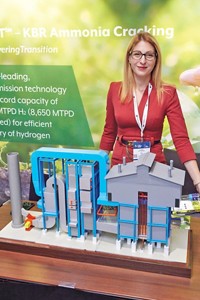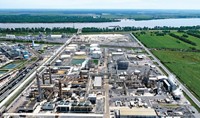Advertisement
Grab your lab coat. Let's get started
Welcome!
Welcome!
Create an account below to get 6 C&EN articles per month, receive newsletters and more - all free.
It seems this is your first time logging in online. Please enter the following information to continue.
As an ACS member you automatically get access to this site. All we need is few more details to create your reading experience.
Not you? Sign in with a different account.
Not you? Sign in with a different account.
ERROR 1
ERROR 1
ERROR 2
ERROR 2
ERROR 2
ERROR 2
ERROR 2
Password and Confirm password must match.
If you have an ACS member number, please enter it here so we can link this account to your membership. (optional)
ERROR 2
ACS values your privacy. By submitting your information, you are gaining access to C&EN and subscribing to our weekly newsletter. We use the information you provide to make your reading experience better, and we will never sell your data to third party members.
Investment
Tata and LG Chem advance CO₂ capture and utilization
Large-scale demonstration projects in England and South Korea will cut 180,000 metric tons of greenhouse gas emissions per year, the firms say
by Craig Bettenhausen
June 30, 2022
| A version of this story appeared in
Volume 100, Issue 24

Chemical companies in England and South Korea are taking steps toward decarbonization’s holy grail: reusing captured carbon instead of venting or burying it.
After almost a year of testing and commissioning, Tata Chemicals Europe is using CO2 captured from its gas-fired power plant to make pharmaceutical-grade sodium bicarbonate near Liverpool, England. The facility will make 85,000 metric tons (t) per year of the high-end baking soda, sold as EcoKarb, says the firm, a subsidiary of the India-based multinational Tata Industries.
The plant will consume 40,000 t of CO2 to convert sodium carbonate to bicarbonate, according to Martin Ashcroft, a managing director at Tata, displacing CO2 the firm was buying from outside vendors via daily tanker deliveries. The technology firm Pentair is providing its advanced amine carbon capture technology to the plant.
The move isn’t just about carbon footprint reduction. Industrial gas industry insiders are expecting a CO2 shortage in Europe and the UK in the coming months as fertilizer plants shut down because of high prices for natural gas, a key feedstock. “This project reduces risk to supply for Tata Chemicals Europe considerably,” Ashcroft says.
Separately, LG Chem says it will use carbon capture to reduce the greenhouse gas emissions from its naphtha cracker in Daesan, South Korea, by 140,000 t per year. The firm currently heats its cracker by burning methane. When upgrades are complete in mid-2024, the facility will instead convert the methane to hydrogen, capture the CO2 byproduct, and heat the cracker with hydrogen.
The project is LG Chem’s first dedicated hydrogen production project, and at 50,000 t per year, one of the largest in the world to make “blue hydrogen,” hydrogen made by reforming methane and capturing by-product CO2.
The captured CO2 will be handed off to the industrial gas firm Taekyung Chemical, which supplies CO2 to beverage, chemical, and heavy industry customers in South Korea. Taekyung’s website says its current CO2 supply is byproduct from fermentation, fertilizer production, and other industrial processes. The firm also intentionally produces CO2 when needed.
Long-term, LG Chem says, it “is confident it can create a value chain in which CO2 generated from the hydrogen production process is repurposed as a useful resource.”
Mike Moore, program director at the nonprofit United States Energy Association, says few hydrogen plants currently capture their CO2 emissions because there is little incentive to do so. Conversely, in some areas with demand for CO2 but few factories with a clean byproduct stream, suppliers mine the gas or burn hydrocarbons just to make it.
“Here in the US, we have a fairly abundant supply of naturally occurring CO2,” Moore says. “We produce it like we produce natural gas, out of several major formations. Industries, like the beverage industry and others, use CO2 that originates in a lot of cases from these natural occurring sources.” Increased capture of CO2 emissions could push such intentionally produced CO2 out of the market, he says.
Aside from developing ways to use CO2 as a feedstock, the importance of these two projects is in testing, refining, and demonstrating carbon capture technologies, according to Andrew Dessler, a professor of atmospheric sciences at Texas A&M Universit, College Station. “Carbon capture is a billion-ton problem,” he says. Even at hundreds of thousands of tons, he says, these are small-scale tests.
“It’s a question of maturing the technology and getting the cost down,” Dessler says. “And then, hopefully, you can deploy it throughout the industrial economy and capture orders of magnitude more. I applaud them for trying to figure out how to do the right thing.”
Getting large, multinational companies involved in carbon capture and utilization is a big deal, adds United States Energy Association Acting Executive Director Sheila Hollis. “That’s the magic juice,” she says. “Once you get going at that level—and Tata has such influence around the world—I think it’s a huge wake-up call.”





Join the conversation
Contact the reporter
Submit a Letter to the Editor for publication
Engage with us on Twitter